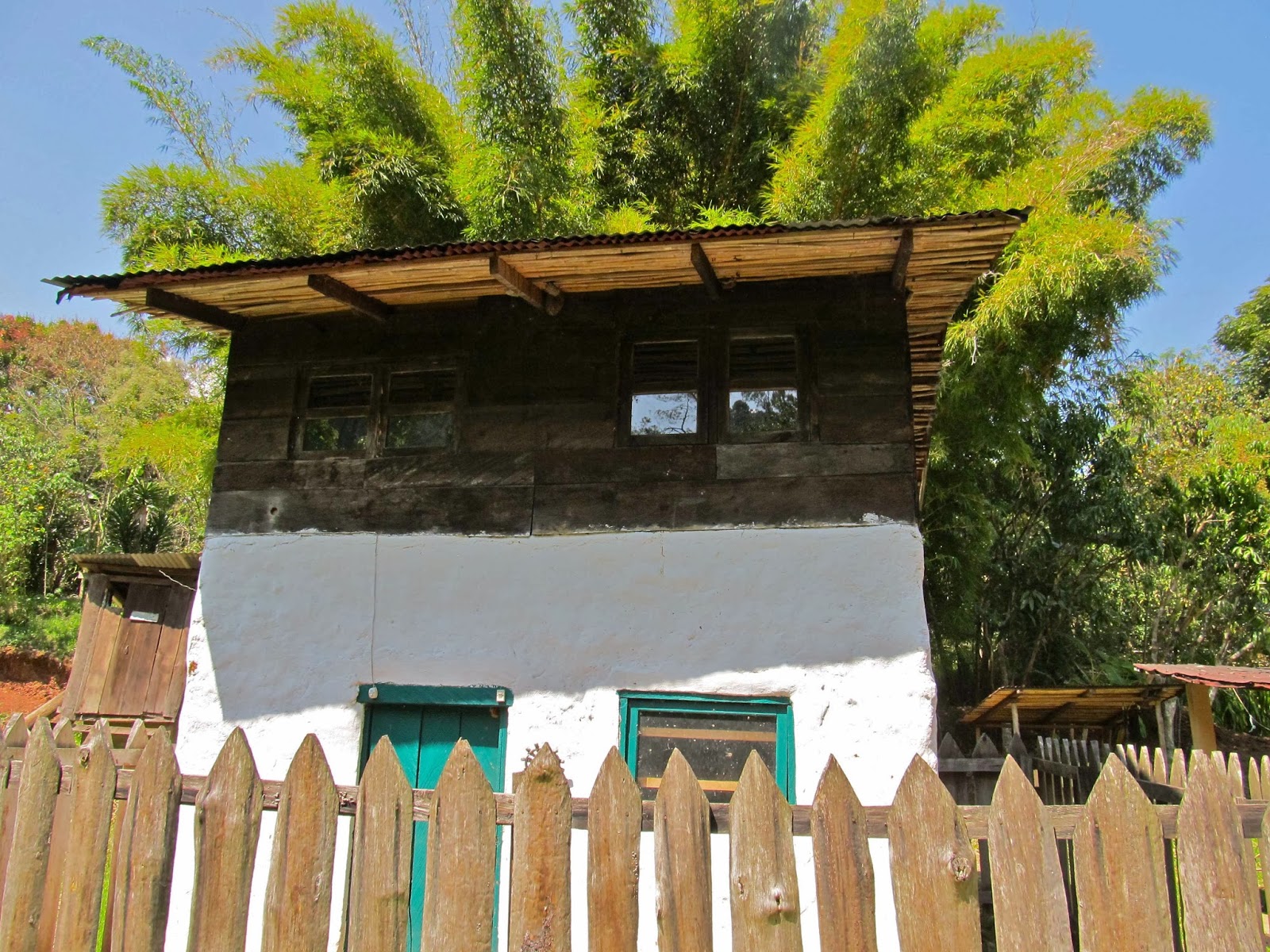 |
| A trail through the community |
I could never have been a hippie, I was too clean. What I saw were filthy dreadlocked druggies who didn't make any sense when you talked to them. Most of them cleaned up after a while, some went to college, and a few of those people are today's "1%", believe it or not.
There were several hippie communes near Boulder, Colorado where I lived. I saw them from the windows of the car, filthy trashy places with naked children running around, and people lying under trees too stoned to move. There were sit-ins and demonstrations at the university where it was hard to tell the hippies from the students. I was too conservative to join those anti-war marches, being the marginal Republican on campus in those days.
My early impressions of communes hadn't changed much even though I have become increasingly liberal.
 |
| Arnulfo describing the worm/compost system |
His descriptions of the community meant that I needed to revise my thoughts and see what living on a commune is really like.
This one is run by a couple, Sylviane and Marzo, who purchased the acreage 30 years ago. They are now in their late fifties and are the acknowledged leaders. People who live there pay about $8US for a room and three meals a day with the agreement that they will do their part of the communal work. Some come for a week or so, others have lived in the community for years and have even built their own homes on the property.
A home is simply a large room. The toilets are communal, as are the meals. Every morning the group decides what needs to be done and who will do it. Meals are made by teams of four people. The rules are simple: no drugs, alcohol, or smoking, no trash left around, and no soap in the river. Organic waste (including human) is composted. It's about as far from my old idea of a hippie commune as it is possible to get.
 |
| Reflective moment beside the river, with dogs.... |
Did I mention the river? It borders the property on the south and while not a navigable river, it has pools deep enough to swim in.
The commune eats what it grows with a few added foodstuffs from outside that are purchased locally. Planted in seemingly random fashion are coffee trees, banana plants, corn, amaranth, vegetables, bamboo, potatoes, traditional medicinal plants, and flowers for the bees. The basic idea of permaculture is to have as little impact on the land as possible, and this means food plants and indigenous plants (weeds) live together in the wild randomness that is normal in nature.
 There is a pottery workshop with a potter's wheel and wood fired kiln where they make their own dishes and pots from clay found on the property. Marzo makes silver jewelry and teaches the craft to anyone who wants to learn. Excess honey and coffee are sold in their little store as well as home-made jams, ceramic sculptures, and plant extracts to treat illnesses.
There is a pottery workshop with a potter's wheel and wood fired kiln where they make their own dishes and pots from clay found on the property. Marzo makes silver jewelry and teaches the craft to anyone who wants to learn. Excess honey and coffee are sold in their little store as well as home-made jams, ceramic sculptures, and plant extracts to treat illnesses. I went with the idea of visiting Arnulfo but have decided to return and stay two nights. I want to see the community in action during the whole of a day. It is a beautiful setting, with a nice international group of people, I may just have to return for a month or two. It would be a great way to polish my Spanish as that is the only language used by everyone.
For more information on the community, click this link: Ha'Omek'Ka
 |
| Rickety bridge across the river where there are several private homes |
 |
| Home of the founders |
 |
| One of many houses |
 |
| Several of the residents have children |
 |
| View from a rooftop |
 |
| View down the valley |
No comments:
Post a Comment